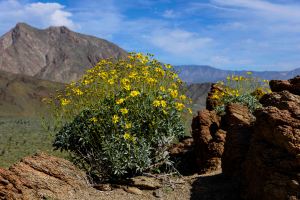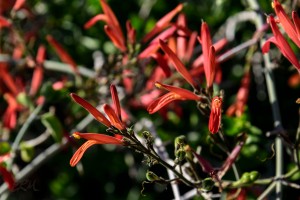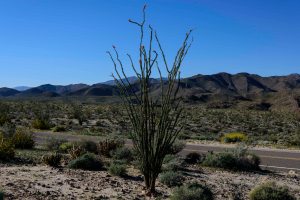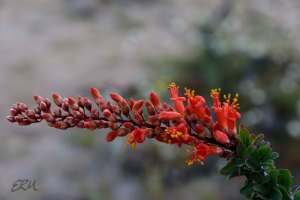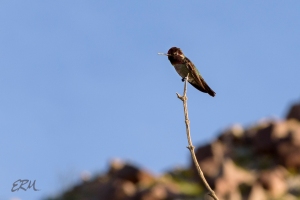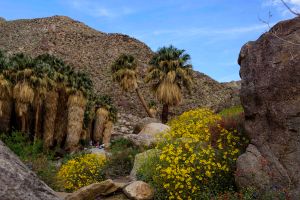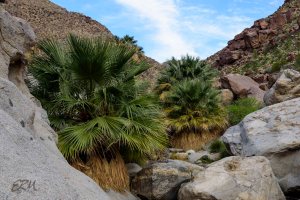So if the five petals of a desert sand verbena flower (see previous post) are not really petals, what are they?
In order to answer that, I’ll need to review some basic flower terminology.
The reproductive organs of a flower (the pistil and stamens) are usually surrounded by petals, which are modified leaves, often brightly colored. Collectively, the petals form an inner whorl of parts that is called the corolla.
There is usually an outer whorl, too. This consists of sepals, modified leaves that are often, but not always, green, and surround the flower bud as it forms. Collectively, the sepals are known as the calyx.
Taken together, the calyx and corolla are called the perianth.
In some species, there’s another set of modified leaves at the base of the flower, in addition to the calyx and corolla, that are called bracts. The bright “petals” of poinsettias and flowering dogwood are examples.
Detailed, technical descriptions of flowers in the Nyctaginaceae will mention the perianth, but say nothing of the petals, because there are none.
What looks like five petals on the sand verbena flower is actually a single five-lobed tube formed by five fused sepals. This is typical for flowers in the Nyctaginaceae. Some sources state that the perianth comprises fused tepals; think of a tepal as an intermediate between a petal and a sepal.
Flowers in this family often have bracts as well; Bougainvillea is an example. The reproductive parts usually consist of a single pistil and five stamens.
The inflorescence is typically a cyme. Most species are forbs, though there are a few shrubs, trees, and vines. There are about 300 species in about 30 families, found mostly in tropical and warmer temperate regions of the world.
Several species of plants from the Nyctaginaceae are found in the Sonoran Desert, including the following.

Allionia incarnata
Trailing windmills is a forb with a vine-like habit, growing along the ground. It can be either annual or perennial. The species is found in the Chihuahuan, Sonoran, and Mojave deserts, and the southern part of the Great Basin Desert. There are two varieties, incarnata and villosa. I believe this one to be the later based on location reports in CalFlora and the USDA PLANTS Database. I don’t have sufficient detail to identify it based on plant characteristics.

This flower consists of three clustered perianths. Unlike most other species in the Nyctaginaceae, trailing windmill flowers stay open all day. Most species in this family have flowers that open late in the day, hence “four o’clock”.

Mirabilis laevis
Depending on which authority you consult, there are four to six varieties of this small shrub, commonly called wishbone bush or wishbone plant. I believe this one to be retrorsa, but lack sufficient detail to say for sure; it could also be villosa. Both have similar ranges in the Sonoran, Mojave, and Great Basin deserts.

 I believe this is going to be a drawn-out wildflower season in the Potomac Gorge. In the past few years, I’ve observed that once the flowers start blooming, they bloom fast. The result is a spectacular mass of flowers all open at the same time, but then it ends quickly, too.
I believe this is going to be a drawn-out wildflower season in the Potomac Gorge. In the past few years, I’ve observed that once the flowers start blooming, they bloom fast. The result is a spectacular mass of flowers all open at the same time, but then it ends quickly, too.

